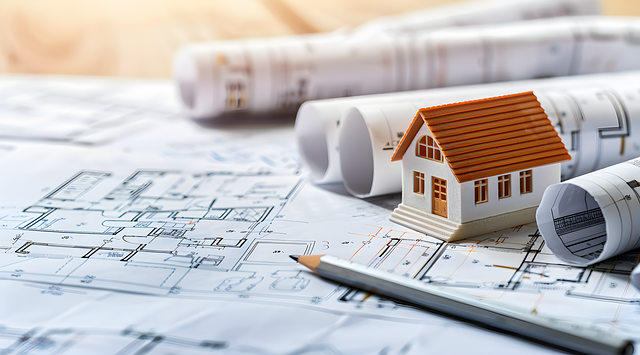Insulation is a key component in creating an energy-efficient home, regulating temperatures, reducing heat transfer, and minimizing utility bills. For eco-conscious homeowners, prioritizing green insulation options like cellulose, cotton, or mineral wool offers sustainable alternatives to traditional materials, lowering environmental impact and carbon footprint. Upgrading insulation through careful removal, replacement, sealing, and maintenance yields significant energy savings and enhances a home's environmental friendliness, making it a vital step in any energy-efficient home project.
“Enhance your home’s eco-friendliness with a powerful yet often overlooked step: upgrading insulation. In the quest for an energy-efficient home, understanding and selecting the right insulation materials is key. This article guides you through the process, from deciphering insulation types to implementing a step-by-step upgrade plan. Discover the environmental impact of your choices and unlock long-term benefits for both your home and planet. Start your journey towards greener living with these insightful tips on energy-efficient home projects.”
Understanding Insulation: The Cornerstone of an Energy-Efficient Home
Insulation is a critical component in creating an energy-efficient home—it acts as a protective barrier, regulating indoor temperatures and reducing heat transfer. Understanding insulation goes beyond just its role in keeping your home comfortable; it’s a key strategy in minimizing energy consumption and lowering utility bills. When considering home improvement projects aimed at making your abode more environmentally friendly, upgrading insulation should be near the top of your list.
An energy-efficient home starts with efficient insulation as it helps to maintain a consistent indoor temperature, reducing the workload on heating and cooling systems. By sealing gaps and cracks around windows and doors, you can prevent warm air from escaping during winter or cool air from seeping in during summer. Modern insulation options come in various forms, including fiberglass, foam, cellulose, and even recycled materials, each with unique R-values that provide optimal thermal resistance for different climates and building types. Incorporating these advancements into your home’s fabric is a sustainable choice that contributes to a greener planet by reducing energy usage and associated emissions.
Types of Insulation: Choosing the Greenest Options for Your Home
When considering an upgrade to your home’s insulation for environmental friendliness, it’s essential to explore eco-conscious options that align with your commitment to a sustainable lifestyle. Many traditional insulation materials have significant environmental impacts, from high energy consumption in production to harmful emissions and waste generation.
Fortunately, the market offers a range of green alternatives suitable for various climates and budgets. Consider natural insulators like cellulose or cotton, which are derived from renewable resources and can be recycled. For an even more sustainable choice, look into mineral wool insulation made from slag, a by-product of steel production that would otherwise go to waste. These options not only reduce your carbon footprint but often provide superior thermal performance, making them valuable additions to any energy-efficient home project.
Upgrading Insulation: A Step-by-Step Guide to Eco-Friendly Practices
Upgrading insulation is a key step in transforming your home into an eco-friendly haven and significantly contributing to an energy-efficient home project. It’s a relatively simple yet powerful way to reduce energy consumption and lower utility bills. Start by assessing your current insulation, identifying areas of weakness, and understanding the types of insulation materials available that align with environmental sustainability.
When upgrading, opt for eco-friendly options like recycled fiberglass or cellulose insulation. These materials are not only effective at retaining heat but also contribute to a reduced carbon footprint. Remove old insulation carefully, being mindful of any potential hazardous materials, and replace it with the new, ensuring proper sealing and coverage. Regular maintenance and checking for gaps or damage over time will maximize your energy savings and further enhance your home’s environmental friendliness.
Benefits and Long-Term Impact: Why Environmentally Friendly Insulation Matters
Upgrading your home’s insulation is a powerful way to contribute to an environmentally friendly living space, and it offers significant benefits that extend far beyond energy savings. In today’s world, where energy-efficient home projects are gaining traction, choosing eco-conscious materials can have a profound impact on both your pocketbook and the planet.
By opting for environmentally friendly insulation, you’re not just reducing heat loss or gain, which leads to lower energy bills; you’re also minimizing the environmental footprint of your home. Traditional insulation materials often contain harmful chemicals and contribute to landfilling waste. In contrast, green insulation options are made from renewable resources, recycled materials, or have a lower carbon footprint during production. This simple upgrade can be a game-changer for achieving an energy-efficient home while promoting sustainability.
Upgrading your home’s insulation is a powerful step towards achieving an energy-efficient, environmentally friendly living space. By choosing eco-conscious materials and following best practices, you contribute to reducing your carbon footprint and saving on energy costs. This article has guided you through the process, from understanding the importance of insulation to selecting the right green options and providing a comprehensive upgrade guide. Remember, each small change makes a difference, and investing in an energy-efficient home project like this is a significant contribution to a sustainable future.
